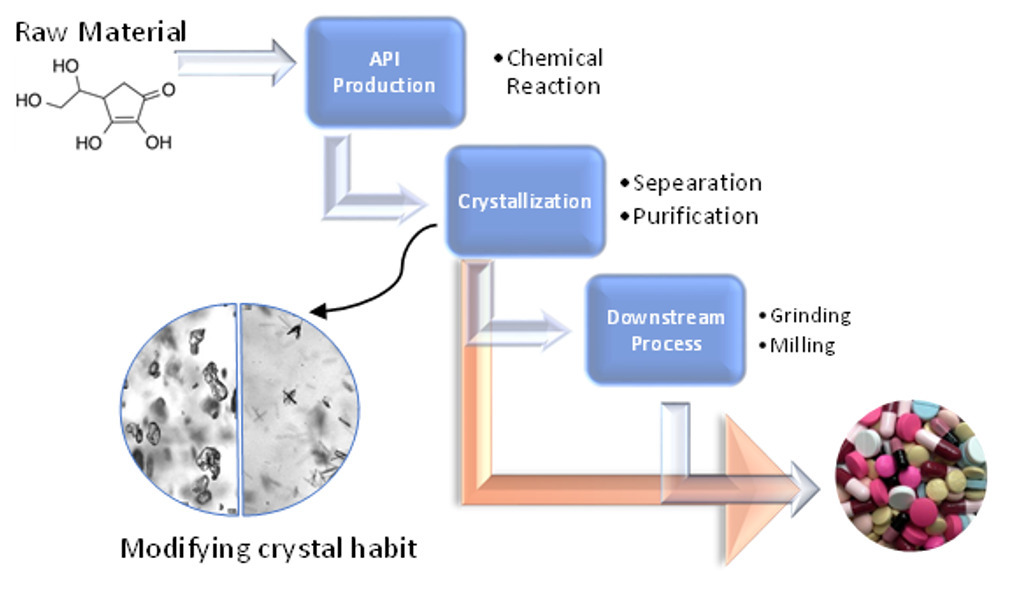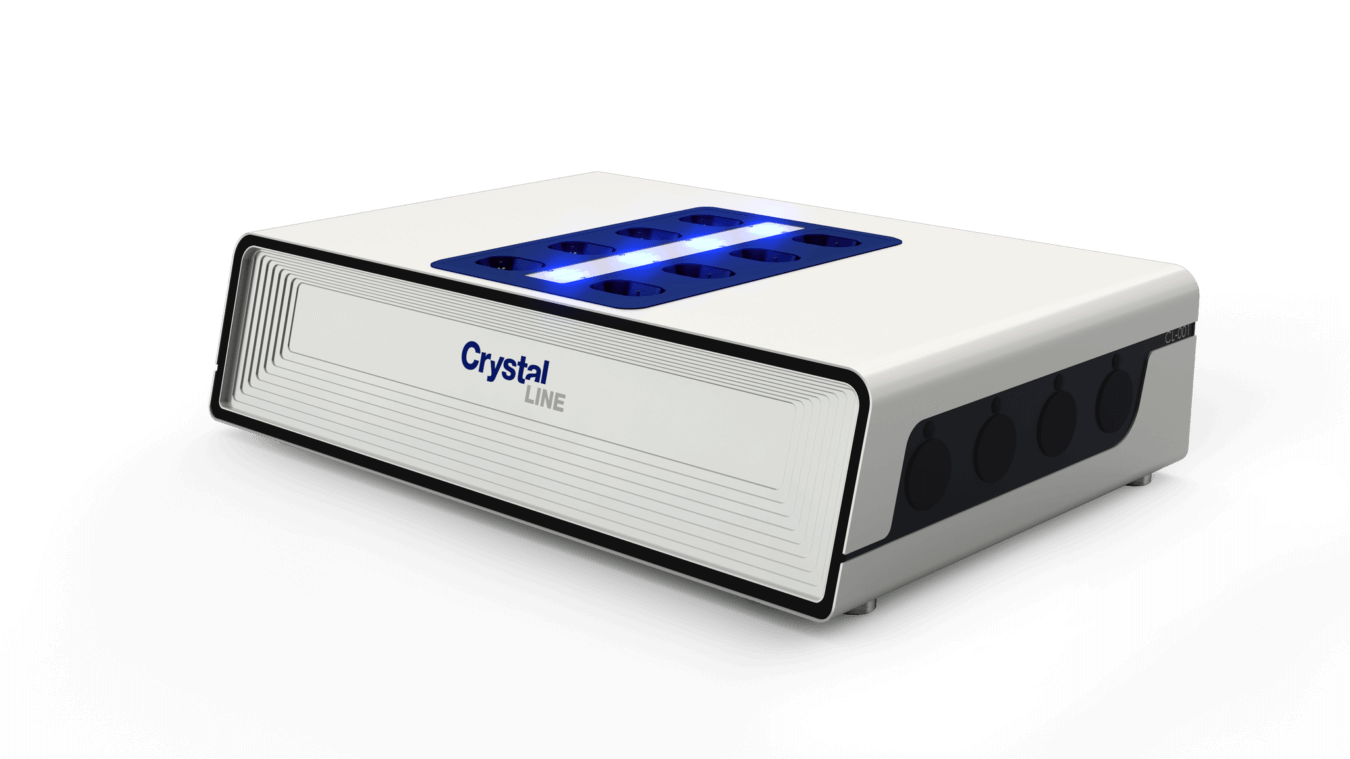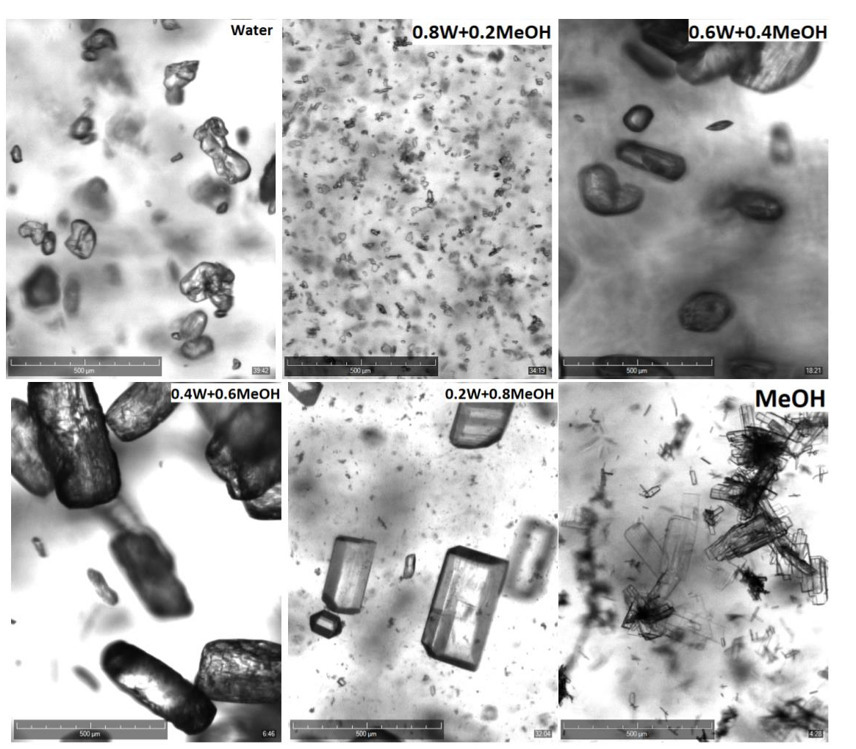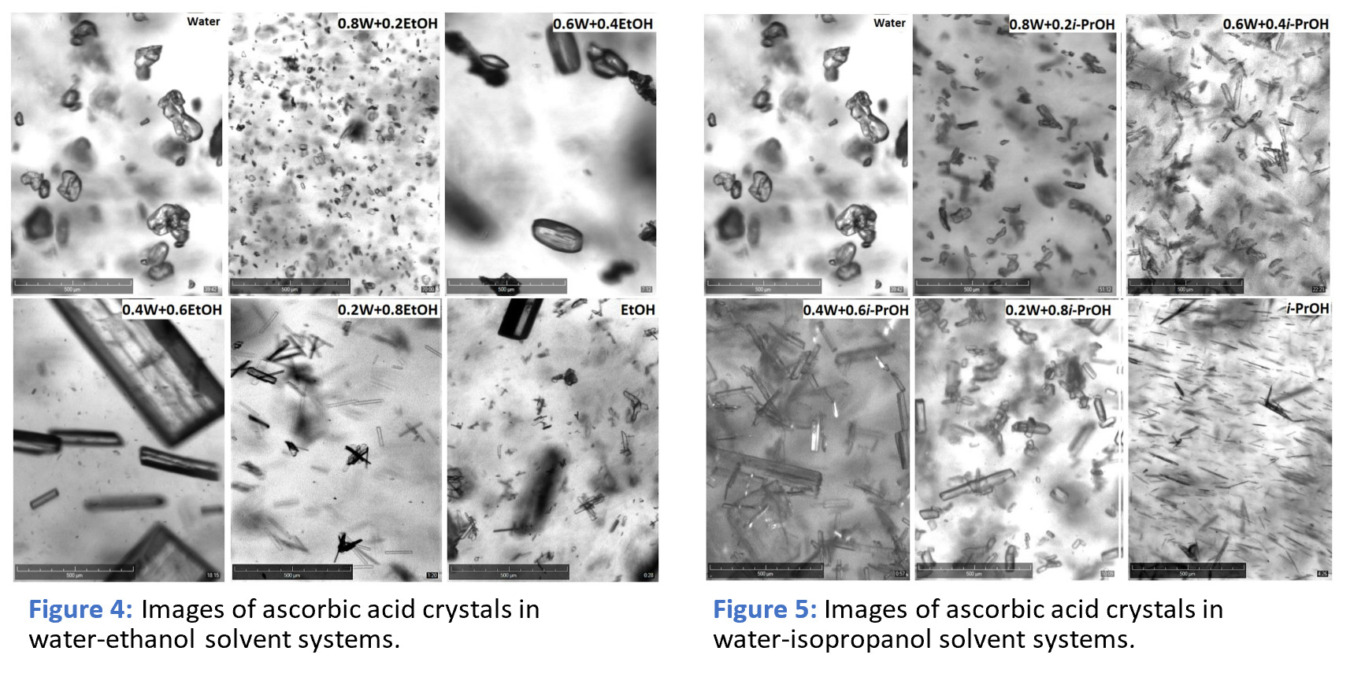Controlling crystal morphology
The control of crystal morphology is of foremost importance in pharmaceutical industries for drug development, as the crystal features and surface properties are the key factors influencing the stability, bioavailability and dissolution properties of an active pharmaceutical ingredient (API). Likewise, the crystal habit impacts the API downstream processes such as milling, flowability, and tableting, subsequently affecting the efficiency of API production. Knowing and being able to modify the crystal habit during crystallization enhances API production by reducing the downstream processes. Therefore, initial screening based on the final crystal habit is essential in choosing appropriate conditions for crystallization. The crystal habit can be modified by controlling the cooling rate, supersaturation ratio, changing solvent, using co-solvent, or adding impurity as a habit modifier.

Figure 1: Schematics of API production
Case Study: Ascorbic acid
The crystal habit of ascorbic acid was observed in the range of water:alcohol binary solvent mixtures. Binary mixtures of solvents were prepared by adding alcohol (methanol/ethanol/isopropanol) as component 2 (x2) to water as component 1 (x1). For each alcohol, five binary mixtures of concentration in mole fraction, x2: 0.2, 0.4, 0.6, 0.8, and 1, were investigated using Crystalline PV/RR reactor system.
Crystalline particle view multiple reactor system
Crystalline PV/RR contains 8 independently controlled temperature reactors with 2.5-5 ml working volume. The application of crystalline is more desirable because of the possibilities to control operating parameters: temperature range (-25 to 150 °C), stirring options (overhead and bottom stirring), heating/cooling rate (0-20 °C/min), reflux, evaporation, anti-solvent, seeding capabilities, and efficiently operated AI-based software for analysis. The in-line analytics, without any probe inserted in the reactor, eliminates the risks of cross-contamination and needless cleaning of reactors. Besides the in-line turbidity measurement, the system is equipped with particle view imaging cameras and/or Raman probes. Using advanced AI-based software analysis, one can effectively determine the particle size distribution (PSD) and particle size and shape distribution (PSSD).

Crystalline PV/RR with 8 independent temperature control reactors
Results & Discussion
The crystal images captured during cooling crystallization are shown in Figures 3, 4, and 5 on a scale of 500 µm in water-methanol, water-ethanol, and water-isopropanol solvent systems, respectively. The crystal habits can be noticed to be modified with the addition of alcohol in the aqueous solution. The formation of cubical or prism shaped crystals was witnessed in water, whereas, as the alcohol composition increased in solvent systems, more and more lengthened prismatic crystals were formed. The shape of ascorbic acid changed to longer prism shape in pure methanol and ethanol, and needle shape in isopropnaol.

Figure 3: Images of ascorbic acid crystals in water-methanol solvent systems
Conclusions
Understanding and controlling the crystal habit during crystallization by changing the solvent composition is advantageous in improving the efficiency of API production. Crystalline PV/RR facilities to see the crystal habit during the crystallization process, which makes it easier to select the appropriate solvent based on the desired crystal habit.

Curious to learn more?
Read more about this case study in the application note "Controlling Crystal Habit With The Choice Of Solvent".